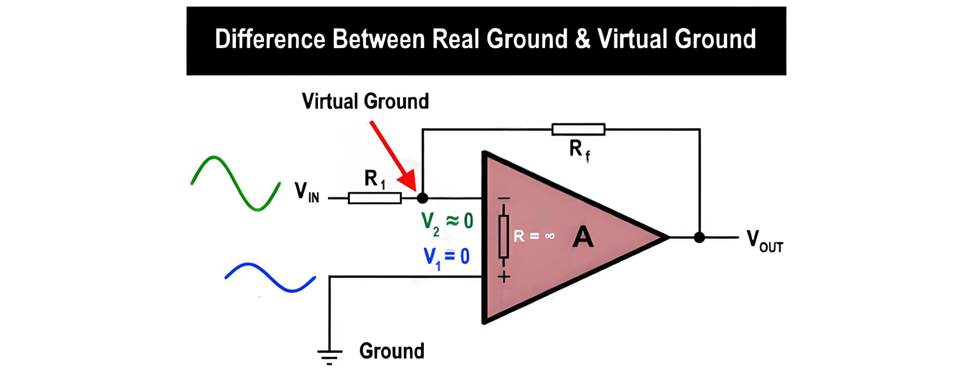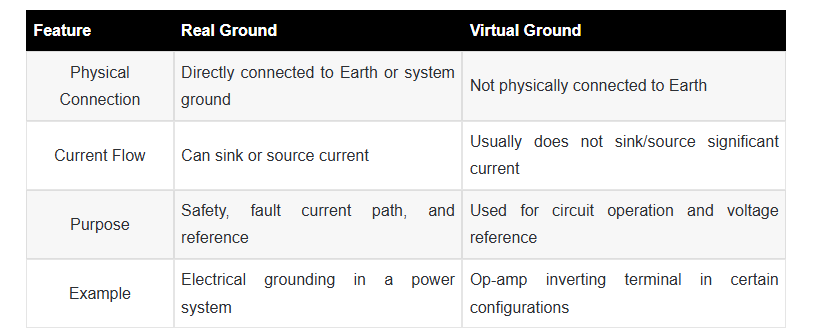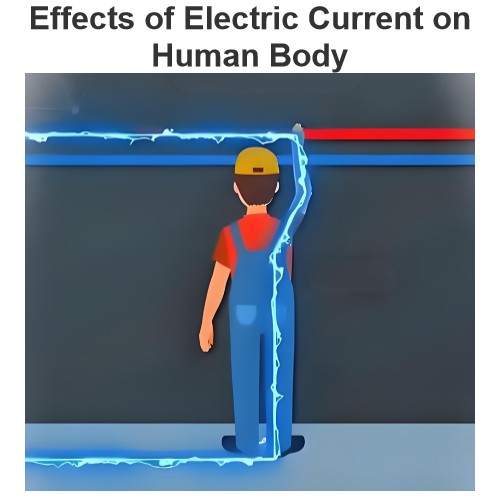Difference Between Real Ground and Virtual Ground
Real Ground vs. Virtual Ground: Definitions and Applications
In the realm of electrical engineering, the concepts of real ground and virtual ground play distinct yet essential roles. Real ground establishes a tangible physical connection between the metallic body of an electrical device and the Earth, typically achieved through an Earth Continuity Conductor (ECG), Grounding Electrode Conductor (GEC), or other equivalent means. On the other hand, virtual ground is an abstract concept primarily utilized in operational amplifiers (op - amps). In this context, a specific node within the circuit is considered to have the same electrical potential as the actual ground terminal, despite lacking a direct physical connection to it.
Real Ground
A real ground, also known as actual ground or earth ground, is a fundamental element in electrical systems, representing a direct physical link to the Earth or a common reference point. Its primary function is to enhance safety by providing a low - resistance pathway for fault currents to flow into the ground. This mechanism effectively prevents electrical shocks by diverting potentially hazardous currents away from users and equipment. In circuit schematics, real ground is conventionally denoted by the ground symbol (⏚ or ⏋).
In compliance with the National Electrical Code (NEC) Article 250, all metallic and exposed components of electrical systems must be connected to a ground rod through an Equipment Grounding Conductor (EGC) and a Grounding Electrode Conductor (GEC). This mandatory connection ensures that any unexpected electrical currents resulting from faults are safely channeled into the ground. Additionally, within electrical panels, the neutral wire is commonly bonded to the earth ground, further reinforcing the system's safety and stability. In standard electrical wiring installations, a green - colored or bare conductor is typically employed for grounding purposes, facilitating easy identification.
While the International Electrotechnical Commission (IEC) and BS 7671 standards share the same underlying principles and objectives as the NEC and Canadian Electrical Code (CEC) regarding earthing, they use different terminologies. For example, under these standards, the metallic parts of electrical equipment are connected to an earth plate via an Earth Continuity Conductor (ECC). A wire with a green or green - with - yellow - stripe color is designated for the Protective Earth (PE) function, serving the same critical safety purpose as the grounding conductors specified in other codes.

In short, V2 does not sink current because the current at node V2 flows through the feedback resistor (Rf) and VOUT due to the high resistance of “R” in the op-amp. Therefore, the V2 node acts as a virtual ground, while V1 is connected to the real ground.
Key Differences Between Real and Virtual Ground
The following comparison table shows the main differences between virtual and real ground.

The Electricity Encyclopedia is dedicated to accelerating the dissemination and application of electricity knowledge and adding impetus to the development and innovation of the electricity industry.













